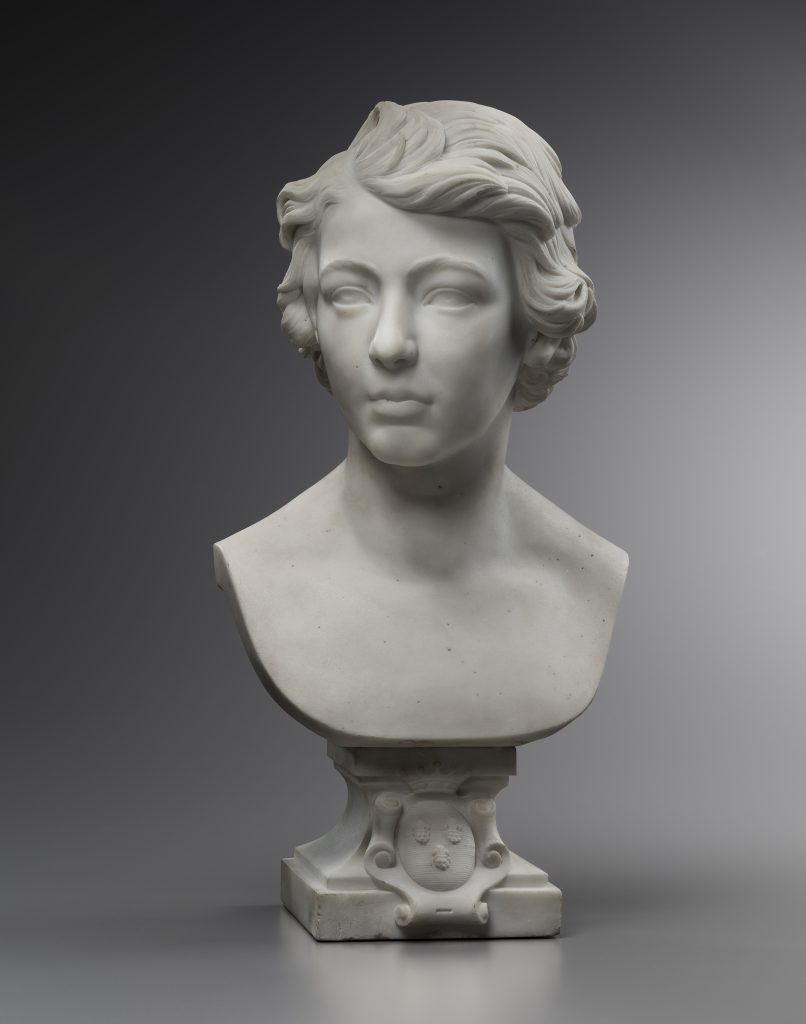Destined to serve the memory of the model in the form of true sacralisation and an affirmation of the sitter’s social rank, Jeune adolescent de la famille Berthelot is a beautiful example of the French romantic sculpture.
Introduced in the beginning of the 19th c., the bust became a means to limit movement, expression and costume, and to idealise the traits of the face, whilst giving new importance to the hair dress. Drawing on the fashion of the time, the artist would transform the hair into his fantasy, giving the marble-sculpted hair a supernatural lightness. This realist virtuosity, a synthesis between the French school and neo-classical modernism, can be seen in many romantic statuettes of the mid-19th c. that soon found its way into the bourgeois interiors. (see Gaborit, 1998, p. 263).
The present marble of this young adolescent has the inspired gaze of a tragedy actor. The spirit of the statuette is that of a modern young man who does not want to be compared to a prince or a god, but instead has a natural, nonchalant attitude and who is not preoccupied by the spectator’s gaze. The face illustrates a truthful likeness of the physique: the presence of a living being, the discretion of a mundane boy. Evoking sensual grace and mystery, the bust’s facial expression and hair dress show traits unique of its male sitter, a figure of its time, a young member of the Berthelot family.
Jean-Pierre Dantan, French portrait sculptor and inventor of the sculptural caricature, has many famous characters of political, music and arts realms in his repertoire. In the 1820’s, he began to exploit his talent as portraitist, who could translate out of marble a romantic, expressive embodiment of the sitter. By frequenting the salons of nobility and famous artists such as Pierre-Luc-Charles Cicéri, where he produced multiple busts, Dantan quickly made a name for himself and received many commissions, which would lead to great acclaim for his caricature busts as well as his honest statuettes of the European royalties and elite. Influenced by Romanticism and the theories of phrenology, Dantan aimed at depicting the veritable character of his subject with an expressive quality in small-scale statuettes (see Baridon, 2006, p. 127).






